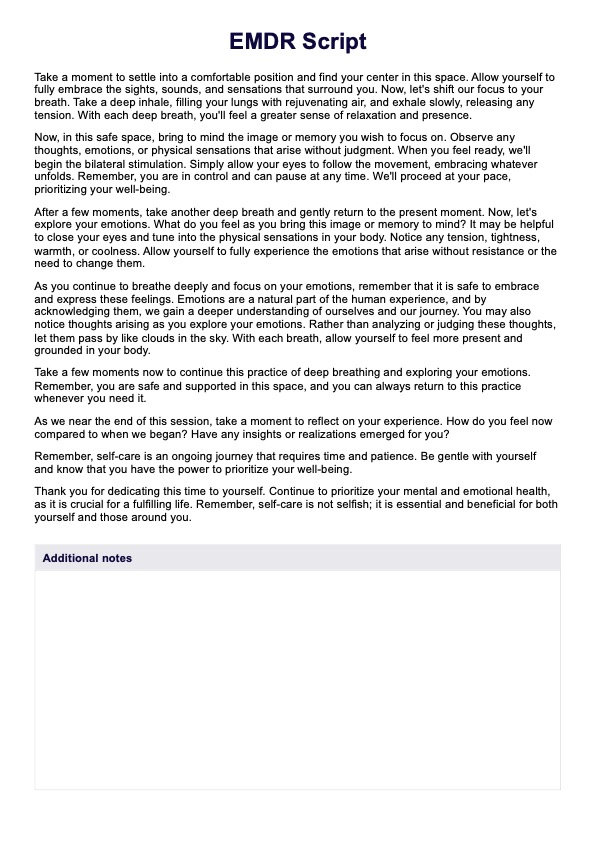EMDR Scripts can be beneficial in various situations, such as when working with clients who have difficulty accessing their emotions or memories or when focusing on specific target areas during the reprocessing phase of EMDR therapy.

EMDR Script
Access a free EMDR Script template for therapy sessions. Help clients explore past experiences and emotions with this powerful technique.
Use Template
EMDR Script Template
Commonly asked questions
Yes, with Carepatron's customizable templates, therapists can modify and tailor EMDR Scripts to meet each client's needs.
The eight phases of EMDR therapy are history-taking, preparation, assessment, desensitization, installation, body scan, closure, and reevaluation. Each phase involves specific steps to help the client process and resolve traumatic memories.
EHR and practice management software
Get started for free
*No credit card required
Free
$0/usd
Unlimited clients
Telehealth
1GB of storage
Client portal text
Automated billing and online payments











